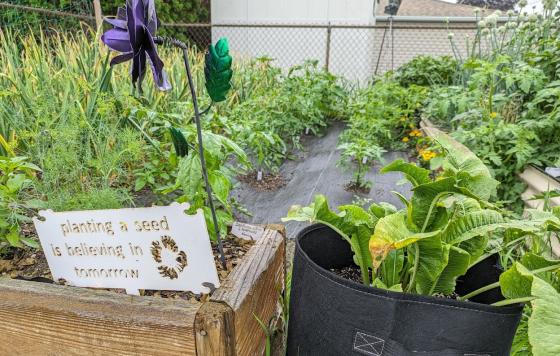
As we take time during Black History Month to reflect on many important individuals and events that have contributed so much, it is also important to understand the connection between Black History and the Environmental Justice (EJ) movement.
We live in a society that has institutionalized systemic racism for hundreds of years and its impact is most concentrated in majority BIPOC and low-income communities. Environmental racism comes in many different forms - food deserts (lack of supermarkets and fresh foods), water contamination, siting polluting facilities close to where people live, not properly funding or cleaning up toxic waste sites, and allowing developers to build unwanted facilities. As result, it compromises people’s health including shortened life spans, creates an unsustainably built environment, financial hardships due to higher medical costs and lost workdays.
In contrast, the essence of the EJ movement is to empower and give voice to the community most impacted so they can advocate and protect their families from environmental hazards, ensure preventative and enforcement measures are taken, and funds are invested in more sustainable systems.
The EJ movement has its origins in the 1980’s. During this period, one of the most infamous cases in the EJ movement took place in Warren County, North Carolina, in which PCB-contaminated soil was purposely dumped in black community, despite protest from the community members.
Robert Bullard PhD, also known as the Father of EJ, was a trailblazer in connecting environment and civil rights by publishing a critically acclaimed book, Dumping in Dixie, in addition to investigating countless examples of environmental injustices throughout the nation. Another notable trail blazer is Reverand Chavis, of the United Church of Christ Commission for Racial Justice, who published the first Toxic Waste and Race in the United States report. Dr. Robert Bullard and Reverend Benjamin Chavis were both selected as the first-ever environmental justice representatives on a presidential transition team (for then-President-elect Clinton).
Environmental injustices are not just occurring in the South. They have also been taking place, right here in New Jersey. For instance, the NJ Department of Environmental Protection (NJDEP) issued a permit in 2001 to build a hazardous waste treatment, storage and disposal facility at the Waterfront South area of Camden. The Waterfront South community was already home to a regional incinerator, regional sewage treatment plant and multiple Superfund sites.
Community and Environmental groups challenged the Camden County Municipal Waste Authority for odor and other violations deriving from its sewage plant and illegal toxic emissions. The Ironbound section of Newark experienced the same fate – multiple forms and cumulative impacts of polluting facilities with a total disregard of the environmental and health injustices they cause.
This is in addition to the over 20,000 trucks that go in and out of the Ports of Newark/Elizabeth every day. They are some of the oldest and dirtiest trucks in the state. They spew dirty diesel into largely Black and Brown neighborhoods located adjacent to the port complex. The remedy is to convert to zero emission trucks and equipment, but no large-scale action has been taken to date-making these communities the sacrifice zone while the goods movement industry and other polluting facilities profit.
While there have been many struggles in the EJ movement, it is also important to acknowledge our victories too. On April 17th, 2023, NJDEP finalized and published enforceable regulations for the state’s Environmental Justice Law (September 2020). More recently, EJ activists won their campaign against the building of a gas power plant in Kearny, NJ. This facility would have increased climate-warming emissions and air pollution in already overburdened communities.
The EJ movement has a lot more Black History in the making. The next generation of EJ leaders and advocates have already arrived, and I am one of them. Together, we will continue to add to the legacy of Black History and the Environmental Justice Movement. Happy Black History Month and please share this blog with others!




